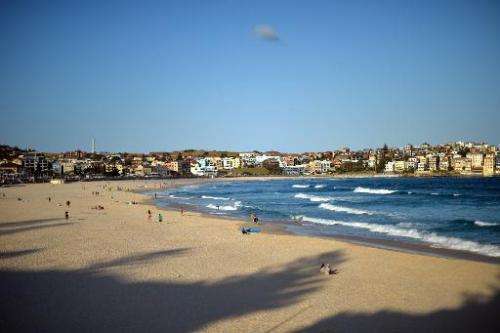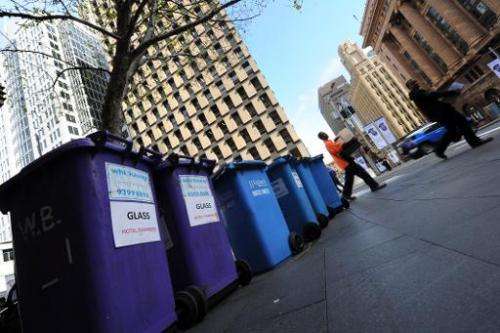Plastic pollution choking Australian waters, study says

Three-quarters of the trash found off Australian beaches is plastic, a study released Monday said as it warned that the rubbish is entangling and being swallowed by wildlife.
Researchers surveyed the vast Australian coastline at intervals of about 100 kilometres (62 miles), compiling the world's largest collection of marine debris data, the Commonwealth Scientific and Industrial Research Organisation (CSIRO) said.
"We found about three-quarters of the rubbish along the coast is plastic," CSIRO scientist Denise Hardesty said.
"Most is from Australian sources, not the high seas, with debris concentrated near cities."
Rubbish found included glass and plastic bottles, cans, bags, balloons, pieces of rubber, metal and fibreglass as well as fishing gear and other items lost or discarded in or near the sea.
This marine debris not only poses a navigation hazard but can smother coral reefs, transport invasive species, harm tourism and kill and injure wildlife, the report said.
It warned that litter impacted wildlife through entanglement and ingestion but also indirectly via the chemicals it introduces into marine ecosystems.
Smaller turtle species in particular ingest the debris, possibly because soft, clear plastic resembles its natural prey jellyfish, it said.
"Our findings indicate oceanic leatherback turtles and green turtles are at the greatest risk of both lethal and sub-lethal effects from ingested marine debris," the report said.

Birds, meanwhile, eat everything from balloons to string, with the survey finding 43 percent of seabirds had plastic in their gut, with the Tasman Sea between Australia, New Zealand and the Southern Ocean pinpointed as a high risk region.
"Our analyses predict that plastics ingestion in seabirds may reach 95 percent of all species by 2050, given the steady increase of plastics production," it said.
Entanglement also poses the risk of death or maiming to seabirds, turtles, whales, dolphins, dugongs, fish, crabs and crocodiles and other species.
"Approximately one-third of marine turtles around the world have likely ingested debris, and this has increased since plastic production began in the 1950s," Hardesty said.
"We also estimate that between 5,000 and 15,000 turtles have been killed in the Gulf of Carpentaria (in northern Australia) after becoming ensnared by derelict fishing nets mostly originating from overseas."
The report, part of a three-year marine debris research and education programme developed by Earthwatch Australia with CSIRO and energy group Shell, found that there were two main drivers of the pollution—littering and illegal dumping.
© 2014 AFP


















